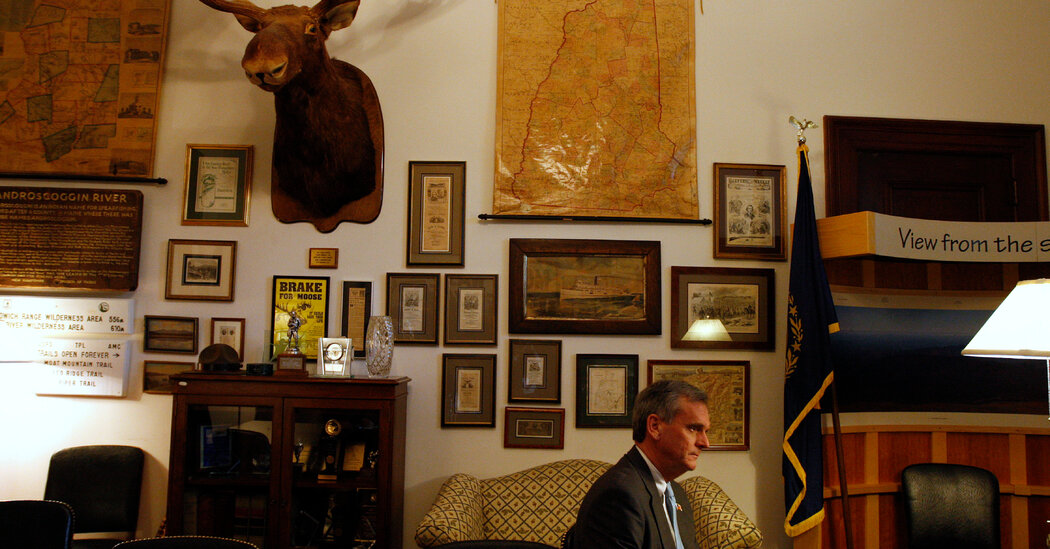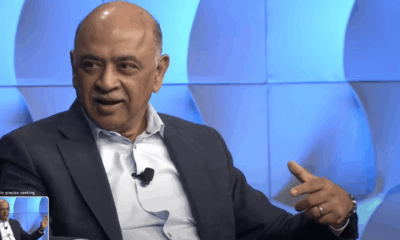Breaking News
G.O.P. Targets a Medicaid Loophole Used by 49 States to Grab Federal Money

In 1989, New Hampshire’s Republican governor, Judd Gregg, had a significant budget deficit he didn’t know how to address. His health secretary proposed a solution: a tax strategy he had heard about that would compel Washington to provide the state with millions in additional Medicaid funds.
This strategy, known as a Medicaid provider tax, was one of the first of its kind, with New Hampshire taxing hospitals and then returning the funds to them as increased payments for Medicaid patients’ care. This tactic allowed the state to inflate its Medicaid spending on paper, resulting in higher matching funds from the federal government.
“It was a way for the state to essentially manipulate the federal government,” Mr. Gregg explained.
What began as innovative financial planning in New England has evolved over the years into a fundamental aspect of Medicaid financing, the health insurance program for low-income individuals that covers 72 million Americans. Every state, except Alaska, has implemented at least one form of such tax. In some states, provider taxes and associated payments contribute more than a third of the total federal funding for the program.
Decades later, congressional Republicans are now contemplating scaling back or eliminating these taxes as a means to achieve the substantial federal spending reductions outlined in the House budget proposal. This move could save the government approximately $600 billion over the next decade, a significant portion of the $880 billion in cuts mandated by the House committee overseeing Medicaid.
Interestingly, this change could disproportionately impact Republican-led states, as a recent analysis indicates that these states rely more heavily on the provider tax strategy in their Medicaid budgets.
Despite the potential challenges for certain states, the idea of ending these payments has gained traction among conservative think tanks and congressional Republicans, who have criticized the system as gimmicky and even likened it to “money laundering.”
Brian Blase, President of the Paragon Institute, has been advocating for lawmakers to reform the system as part of their budget legislation, citing examples of states exploiting the loophole to generate additional federal funds.
In its most basic form, the tax maneuver functions by increasing payments to hospitals, thus prompting higher contributions from the federal government. This results in states being able to generate additional revenue while also boosting hospital reimbursements.
Given that Medicaid allocates $870 billion annually, states can generate tens or hundreds of millions of dollars through these tax strategies.
Over time, as the rules have become more intricate and new strategies have emerged, the financing mechanisms have grown more complex, making it harder to track the flow of funds. Nonetheless, data indicates that the total federal contribution has increased even as the official match rates have remained unchanged.
The exact amount of revenue generated by these taxes and related strategies is unknown to the government. The Centers for Medicare and Medicaid Services, responsible for the federal share of the program, does not monitor all revenue related to provider taxes. Similarly, the Medicaid and CHIP Payment and Access Commission, established by Congress to analyze Medicaid spending, lacks comprehensive data on these taxes.
For years, the use of provider taxes in New Hampshire was candidly referred to as “Mediscam” by state officials. Other states have adopted less colorful terms like “tax and match” in Maine or “Medicaid maximization” in the early 2000s when these taxes were gaining prominence.
While the federal government permits states to implement provider taxes within certain limits, there are concerns about potential misuse. Currently, there are 19 different types of healthcare providers that can be taxed, not limited to hospitals but also encompassing dentists, chiropractors, and various approved reimbursement methods.
Rodney Whitlock, a vice president at McDermott+ Consulting, emphasized the legality of these tax strategies, highlighting the challenge of reforming a system that has become deeply entrenched.
Proposals to ban these taxes do not include provisions for replacing lost funds with new sources, potentially leading to significant budget shortfalls for some states. This could result in cuts to Medicaid coverage, reduced payments to healthcare providers, or other budget adjustments like tax increases or cuts to public services.
Robin Rudowitz, director of the Medicaid program at KFF, emphasized that the decision to eliminate these funds is a policy choice rather than an effort to combat fraud.
The federal government provides a larger share of funding to poorer states, which are often located in the South. Many of the states that would be most affected by the policy change are governed by Republicans.
Due to the lack of precise federal estimates on the impact of these taxes, researchers at The Hilltop Institute at the University of Maryland-Baltimore County have pieced together data from various sources to estimate the revenue generated by these tax strategies for each state.
Using conservative estimates, their analysis suggests that states like South Carolina and Mississippi could face significant budget shortfalls if these taxes were eliminated.
Lawmakers are also considering other budget cuts, such as reductions in spending for Medicaid expansion under Obamacare, which would disproportionately impact wealthier states governed by Democrats. However, the focus on ending provider taxes has garnered more attention due to its rhetorical appeal.
Efforts to roll back provider taxes have been met with resistance in the past, with both Democratic and Republican administrations facing challenges in implementing such changes. Despite calls for reform from government watchdog agencies and experts, the fate of these tax strategies remains uncertain.
Stacey Hughes, an executive vice president of the American Hospital Association, defended the legitimacy of these supplemental payments, emphasizing their scrutiny and regulatory compliance.
While various regulations and recommendations have been proposed to address the use of provider taxes, the lack of decisive action on this issue has allowed the system to persist without significant reform.
Andy Schneider, a research professor of public policy at Georgetown and former Democratic congressional staffer, expressed frustration at the delayed discussion surrounding these tax strategies, suggesting that the conversation should have taken place much earlier.
Despite initially viewing Medicaid provider taxes as a temporary measure to address fiscal challenges, Mr. Gregg eventually recognized the entrenched nature of these tax strategies. He acknowledged the difficulty in reforming a system that had become ingrained over time.
“At the time, I was willing to exploit the federal government due to our crisis situation,” he recalled. “I assumed it would be temporary, but it became an ongoing practice that persisted for years.”
Additional work by Guilbert Gates and Alicia Parlapiano.
-

 Destination8 months ago
Destination8 months agoSingapore Airlines CEO set to join board of Air India, BA News, BA
-

 Breaking News10 months ago
Breaking News10 months agoCroatia to reintroduce compulsory military draft as regional tensions soar
-

 Tech News12 months ago
Tech News12 months agoBangladeshi police agents accused of selling citizens’ personal information on Telegram
-

 Gadgets3 months ago
Gadgets3 months agoSupernatural Season 16 Revival News, Cast, Plot and Release Date
-

 Productivity11 months ago
Productivity11 months agoHow Your Contact Center Can Become A Customer Engagement Center
-

 Gadgets3 weeks ago
Gadgets3 weeks agoFallout Season 2 Potential Release Date, Cast, Plot and News
-

 Breaking News10 months ago
Breaking News10 months agoBangladesh crisis: Refaat Ahmed sworn in as Bangladesh’s new chief justice
-

 Toys12 months ago
Toys12 months ago15 of the Best Trike & Tricycles Mums Recommend





















